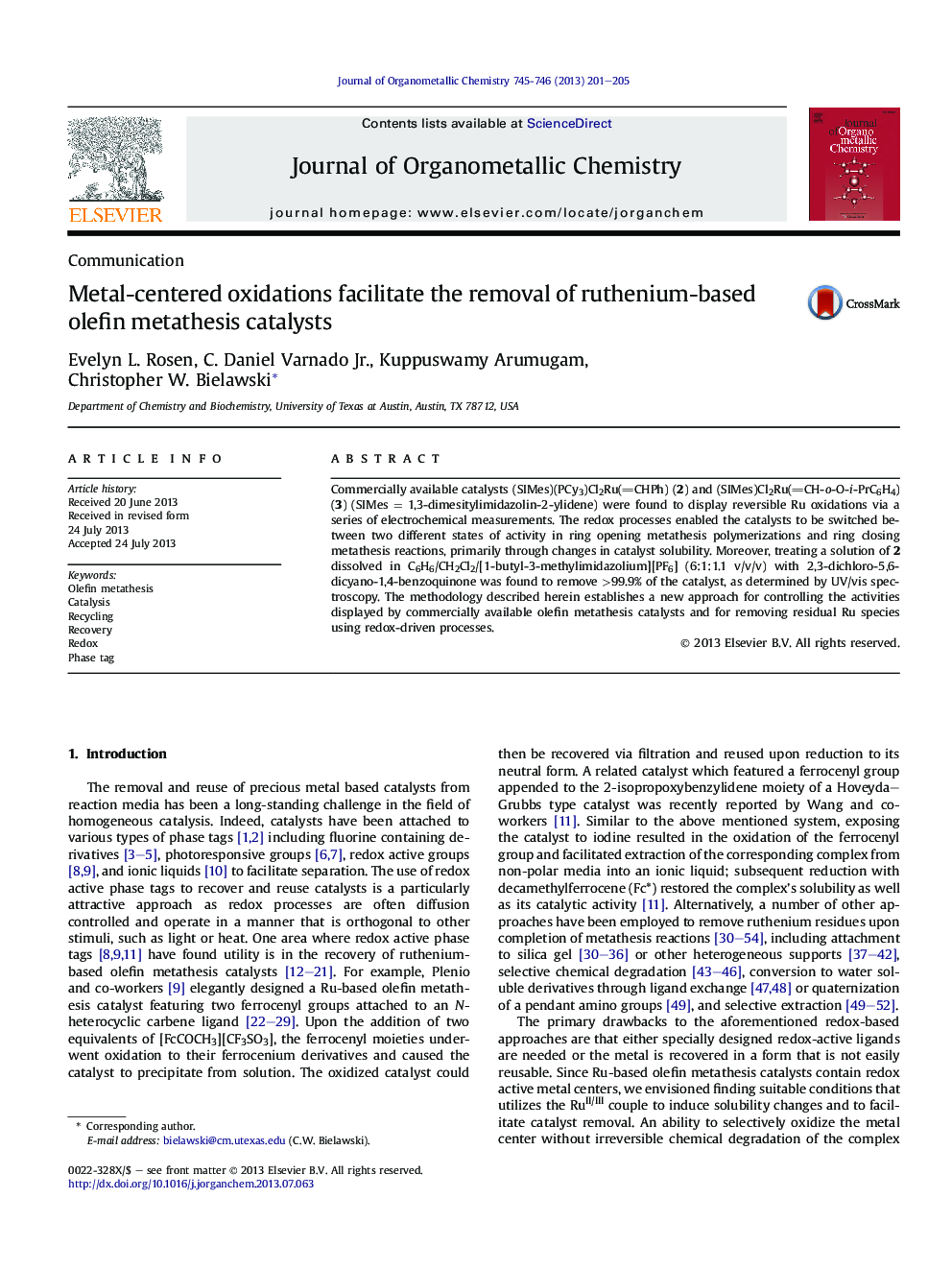| Article ID | Journal | Published Year | Pages | File Type |
|---|---|---|---|---|
| 1321572 | Journal of Organometallic Chemistry | 2013 | 5 Pages |
•The catalytic activities of Ru complexes may be switched using redox-driven processes.•Chemical oxidation reduces the solubilities of Ru-based metathesis catalysts.•A new approach for removing commercial catalysts using has been established.
Commercially available catalysts (SIMes)(PCy3)Cl2Ru(CHPh) (2) and (SIMes)Cl2Ru(CH-o-O-i-PrC6H4) (3) (SIMes = 1,3-dimesitylimidazolin-2-ylidene) were found to display reversible Ru oxidations via a series of electrochemical measurements. The redox processes enabled the catalysts to be switched between two different states of activity in ring opening metathesis polymerizations and ring closing metathesis reactions, primarily through changes in catalyst solubility. Moreover, treating a solution of 2 dissolved in C6H6/CH2Cl2/[1-butyl-3-methylimidazolium][PF6] (6:1:1.1 v/v/v) with 2,3-dichloro-5,6-dicyano-1,4-benzoquinone was found to remove >99.9% of the catalyst, as determined by UV/vis spectroscopy. The methodology described herein establishes a new approach for controlling the activities displayed by commercially available olefin metathesis catalysts and for removing residual Ru species using redox-driven processes.
Graphical abstractThe redox processes intrinsic to commercially-available Ru-based olefin metathesis catalysts were used to switch between two different states of activity in ring opening metathesis polymerizations and ring closing metathesis reactions, and also used to facilitate the removal of the catalysts.Figure optionsDownload full-size imageDownload as PowerPoint slide
